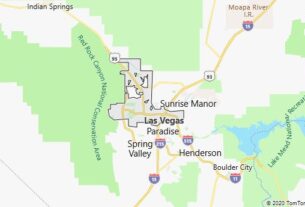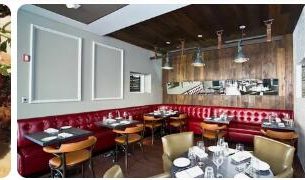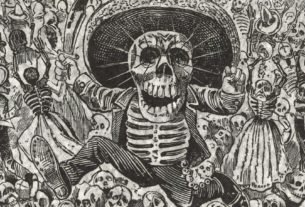Quebec [kve bεk, English kw ɪ bek], French Quebec [ke bεk], province in eastern Canada, with 1,356,625 km 2 (without 185,509 km 2 inland waters), the largest province of Canada (almost four times the size of Germany); (2019) 8.5 million residents, that is almost a quarter of Canada’s population. The capital of the province is Quebec, the largest city is Montreal.
The majority of the residents are French-Canadians, around 78% state French (the official language of Quebec) as the colloquial language. Less than 10% of residents have English as their mother tongue. In addition, especially Eastern Europeans and Italians settled here and, since 1960, increasingly Portuguese, Haitians, Greeks and Asians; these population groups speak predominantly English, so that especially in the greater Montreal area, where most of the new immigrants settle, the proportion of French speakers is already below 70%.
The population is concentrated in southern Quebec, which includes the fertile landscapes on both sides of the lower St. Lawrence River with the northern foothills of the Appalachian Mountains. 90% of the province’s area is covered by the Canadian Shield, mainly the Labrador Peninsula. Over half of the area is forest-covered, the north is part of the tundra area (permafrost). The mineral resources (iron, copper, gold, zinc, titanium, asbestos), the abundance of wood and the abundant water resources form important economic bases. Since the 1970s, hydro power generation has been at James Bay expanded so that 95% of the province is supplied with hydropower and further energy is exported. The diverse industry supplies, among other things. Aluminum, pulp, paper, chemicals, textiles, machines, vehicles, leather goods, ships and planes; The space industry and information technology should also be emphasized. According to homosociety, Quebec generates around a quarter of Canada’s production value. Locations are Montreal and the city of Quebec. Tourism is mainly concentrated in Montreal, but also includes water and winter sports areas (especially in the Laurentian Mountains) as well as the forest areas with the »Indian Summer«.
History
The rapid economic upswing since the beginning of the 20th century was only temporarily slowed down by the Depression of the 1930s. Following the anti-modernization policies of the conservative Duplessis government (1936–40 and 1944 / 45–59), which were based on French-Canadian nationalism, the »Quiet Revolution«, initiated by the Liberal Party, a renewal of the political structures, the educational and social system. A new form of nationalism emerged from the rivalry between the Francophone majority and the Anglophone minority. It aimed to establish French as the only official language, the improvement of the career opportunities of the French Canadians who are disadvantaged in this regard and the reorganization of the distribution of power between the provinces and the central government (up to and including independence); It was boosted not least by the visit of the French President Charles de Gaulle (1967) and his cry “Vive le Québec Libre!” During a speech in Montreal. As the most radical organization of this nationalism, the separatist Parti Québécois gained increasing influence and established the government from 1976-85. In the Quebec referendum in 1980, however, the population spoke out against the separation of Quebec from Canada (while maintaining economic ties).
1985–94 the Liberals led the government under Robert Bourassa (* 1933, † 1996), who was Prime Minister of Quebec from 1970–76. Quebec was the only province to refuse to ratify Canada’s new constitution of 1982 because it saw its own powers weakened and its interests as the representative of all French Canadians not being adequately taken into account. A constitutional compromise between the prime ministers of the provinces and the federal government, which recognized Quebec’s role as a »Distinct Society« and granted special rights (Meech Lake Accord, 1987), was v. a. not ratified by the parliaments of Manitoba and Newfoundland in due time (23.6.1990) despite some additions due to the newly flared up language dispute, the weakening of the central authority and the distrust of the special status of Quebec by the parliaments of Manitoba and Newfoundland; since then there have been increased demands for Quebec’s independence as well as rebellions by the Anglophone minority and the Indian population (e.g. riots near Montreal in Oka in 1990 and in Kahnewake in 1991). A new compromise on constitutional reform (Charlottetown Accord) negotiated in August 1992 was also rejected by the population in a referendum in October.
As Bourassa’s successor, Daniel Johnson (* 1944) became chairman of the Liberals in December 1993 and head of government in January 1994. With the victory of the Parti Québécois in the elections to the provincial parliament in September 1994, its party leader Jacques Parizeau (* 1930, † 2015) took over the office of Prime Minister. In December 1994 he presented a draft of a Secession Act, which linked the full state independence of Quebec with an economic and (during the consolidation phase) monetary union with Canada. In the secession referendum on October 30, 1995, however, the population just (50.6% of the votes cast) voted for Quebec to remain with Canada, whereupon Parizeau resigned. His successor as party and government leader was Lucien Bouchard (* 1938) in January 1996. In September 1997 the prime ministers of the provinces of Canada (except Bouchard) agreed in the “Declaration of Calgary” on the recognition of the “unique character” of Quebec (de facto a new variant of the Distinct Society clause).




